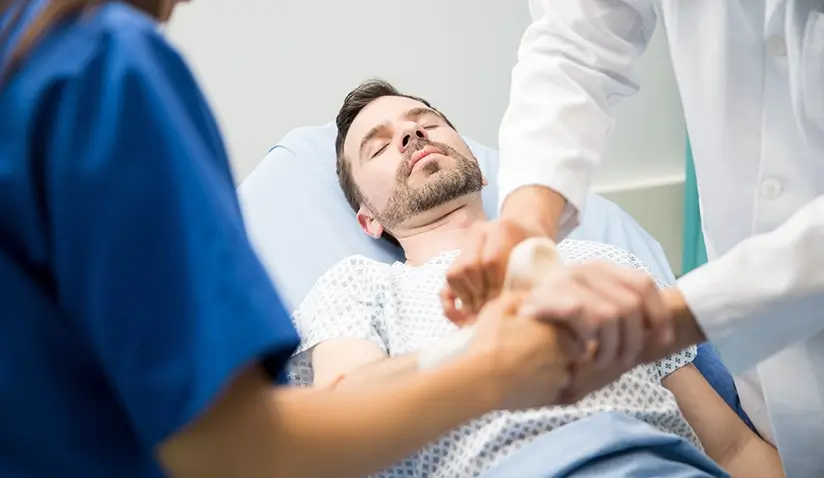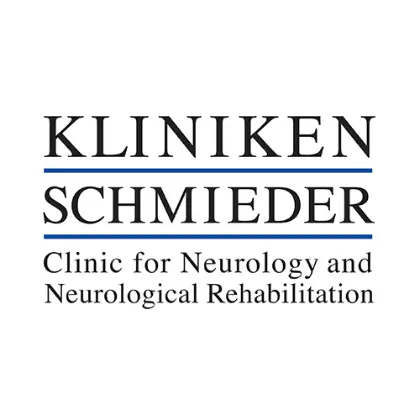Early Neurological Rehabilitation for Patients With Disorders of Consciousness

For patients with disorders of consciousness, time is of the essence. The sooner their rehabilitation starts, the better their prognosis.
Neurological rehabilitation (rehab) is a medically supervised program designed for people with injuries or diseases of the nervous system. Neurological rehabilitation frequently helps patients function better, experience fewer symptoms, and improves overall recovery.
Early neurological rehabilitation of patients with brain damage can help them gain consciousness earlier, reduce the length of hospital stay, and the risk of complications. It also improves the patient’s motor, cognitive, and functional recovery.
Specialized brain injury rehabilitation centers offer patients a multidisciplinary acute neurorehabilitation concept. Each patient receives a customized neurorehabilitation plan that optimizes their recovery and clinical outcomes.
What Are Disorders Of Consciousness?
A disorder of consciousness is when consciousness becomes impaired by damage to the brain. Brain damage can happen because of the following events:
- Traumatic brain injury: A severe head injury caused by a motor vehicle accident or a fall from a substantial height
- Non-traumatic brain injury: Brain damage caused by a health condition such as stroke, hypoxia, poisoning, or intoxication
- Progressive brain damage: The brain becomes damaged gradually over time because of diseases such as Alzheimer’s and inflammatory CNS diseases
To be conscious, a person must have both wakefulness and awareness.
Being awake means being able to open your eyes and having basic reflexes such as blinking, sucking, chewing, swallowing, and coughing. Meanwhile, being aware means having more complex thought processes and being able to communicate or respond to commands.
Consciousness is impaired when a person loses wakefulness, awareness, or both.
The primary disorders of consciousness include
- Coma: The person shows no signs of wakefulness or awareness
- Vegetative state/ Unresponsive wakefulness syndrome: The person is awake, can open their eyes, and has basic reflexes but not awareness
- Minimally conscious state: The person shows signs of being aware from time to time, but these signs are minimal or inconsistent
Why Is Early Neurological Rehabilitation Important In Patients With Disorders Of Consciousness?
Early neurological rehabilitation involves initiating the rehabilitation process during the early (acute and or severely affected, e.g., chronic patients) stages in patients with brain damage.
Recovery of both physical and cognitive function is the primary goal of inpatient rehabilitation after a moderate to severe traumatic brain injury.
Patients hospitalized for a coma, unresponsive wakefulness syndrome, or a minimally conscious state can develop complications that prolong the length of hospital stay and increase the risk of death, including:
- Problems with swallowing (aspiration)
- Problems with bowel and bladder management
- Infection with multidrug-resistant germs colonizing the mechanical ventilation
- Pressure ulcers
- Pulmonary and bladder infections
- Contractures (stiffness in the muscles, tendons, ligaments, or skin)
- Thrombosis
- Heterotopic ossifications (bone growth in muscles and soft tissues)
Early management of patients with brain damage helps prevent these complications and reduces the time spent at the hospital.
The earlier patients with disorders of consciousness receive neurological rehabilitation, the more likely their recovery and their chances of becoming independent and reintegrating into society.
Does Early Neurological Rehabilitation Help Recovery In Patients With Disorders Of Consciousness?
Over the past two decades, acute neurorehabilitation has improved the survival rate and recovery of consciousness in patients with consciousness disorders.
In a study of patients with prolonged disorders of consciousness (PDOC) of mixed etiology with a mean time follow-up of 5 years, 40% of survivors reached functional independence.
In another study, 87 patients with traumatic brain injury (TBI) received either early, high-intensity rehabilitation management or ordinary rehabilitation for four weeks. The study revealed the following results:
- Three months after rehabilitation: Patients who received acute rehab scored significantly higher on the Fugl-Meyer Assessment (FMA, motor function) than those who did not. The score difference between the two groups was around 15 points.
- Six months after rehabilitation: Patients who received early neurological rehabilitation scored significantly higher on the Fugl-Meyer Assessment (FMA, motor function) and the Barthel Index (BI) than those who did not. The score difference between the two groups was around 16 points on the FMA and 13 points on the BI.
Moreover, a review of 11 studies found that starting neurological rehabilitation early, while the patient was still in intensive care, improved the outcomes of patients with brain damage.
The review showed that acute rehab in patients with a decreased level of consciousness significantly improves the following:
- Cognitive functioning
- Movement
- Sensation
- Language and physical abilities
- Functional independence
- Self-care
- Communication
- Work status
Therefore, early intensive rehabilitation management helps restore neurologic function and daily life activities in patients who have suffered a brain injury.
What Does Early Neurological Rehabilitation Involve?
Patients with disorders of consciousness undergoing neurological rehabilitation receive specialized care and treatment from a multidisciplinary team of experts. The therapeutic scope includes:
Occupational therapy
The fundamental objective of occupational therapy is to assist individuals afflicted with brain damage in gaining as much independence as they can at home.
Occupational therapists help patients learn new ways to perform daily activities independently, such as dressing, undressing, eating, washing, going to the toilet, and using a wheelchair.
Physiotherapy
One of the most important challenges patients with disorders of consciousness face is the loss of movement functions.
Very early rehabilitation for stroke and other brain injuries, with an emphasis on mobilization, improves the chances of a patient being able to move, stand, or walk again.
Early physiotherapy aims to achieve early mobilization in bed-ridden patients and prevent complications such as pressure ulcers, muscle wasting, constipation, and blood clots (deep venous thrombosis).
Leading centers comprise highly trained physiotherapists utilizing state-of-the-art equipment and advanced techniques to help patients maintain a full range of motion and joint movement.
Speech/language therapy
After brain injury, patients often experience speech and communication difficulties.
In the acute inpatient rehab phase, patients with communication difficulties receive expert diagnosis and therapy by a speech/language therapist while still hospitalized.
The therapy continues after the patient leaves the hospital.
Swallowing and breathing therapy
Patients with consciousness disorders may experience swallowing problems, including aspiration.
Respiratory physiotherapists help improve swallowing and wean patients off tracheostomy using highly focused techniques.
Physical therapy (massage, lymphatic drainage)
A massage therapist will perform gentle lymphatic drainage massage techniques to relieve tissue swelling and improve bodily functions.
Neuropsychology
A brain injury affects a person’s ability to think, solve problems, and process information. It can also cause mood changes, agitation, depression, anxiety, and other psychological issues.
Neurological rehabilitation centers offer patients early neuropsychological treatment after brain damage.
Early cognitive rehabilitation can significantly improve the patient’s rehabilitation process and reduce the risk of developing post-traumatic stress disorder after brain injury.
Brain stimulation
Brain stimulation is utilized in early neurological rehabilitation to promote early awakening in patients with disorders of consciousness.
Two noninvasive brain stimulation (NIBS) techniques utilized include transcranial direct current stimulation (tDCS) and transcranial magnetic stimulation (TMS).
tDCS and TMS can help patients regain consciousness earlier and decrease their risk of disability and/or death after brain injury.
Summary
Early neurorehabilitation with intensive care treatment can prevent complications and improve outcomes in patients with brain damage. With proper early neurological rehabilitation, patients affected by consciousness disorders have been shown to benefit, enabling earlier recovery and independence in daily activities.

As pioneers in Neurological Rehabilitation since 1950, Kliniken Schmieder has set new medical standards utilizing the latest therapeutic innovations in areas such as physiotherapy, occupational therapy, recreational therapy, and new feedback-guided devices for the upper extremities. The group specializes in comprehensive Neurological Rehabilitation, starting with managing acute neurological illnesses, such as epilepsy and encephalitis, Early Rehabilitation of patients recovering from traumatic brain injury or stroke to Post-Primary Rehabilitation. Depending on the patient's condition, recovering basic functions, achieving independence in activities of daily living, or relearning to swallow or speak are some of the program's goals. Annually, over 14,000 patients from across the world, in all stages of acute and rehabilitative recovery, benefit from their expertise in neuro rehab. Currently, Kliniken Schmieder operates a network of six cohesive clinics across Germany, which have earned global recognition as Centers of Excellence in Neurorehabilitation.
Sources:
Featured Blogs



